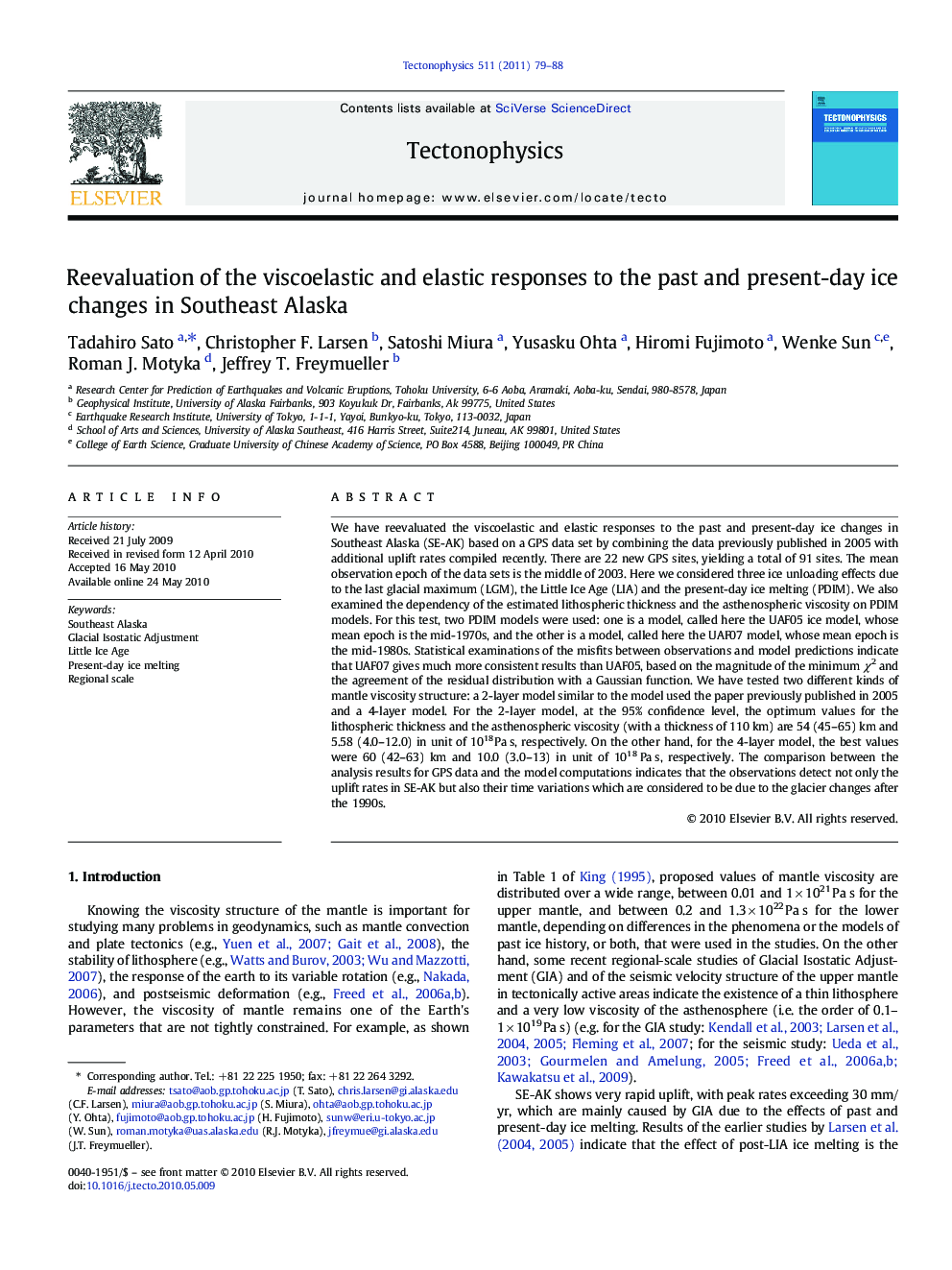| کد مقاله | کد نشریه | سال انتشار | مقاله انگلیسی | نسخه تمام متن |
|---|---|---|---|---|
| 4692975 | 1636835 | 2011 | 10 صفحه PDF | دانلود رایگان |

We have reevaluated the viscoelastic and elastic responses to the past and present-day ice changes in Southeast Alaska (SE-AK) based on a GPS data set by combining the data previously published in 2005 with additional uplift rates compiled recently. There are 22 new GPS sites, yielding a total of 91 sites. The mean observation epoch of the data sets is the middle of 2003. Here we considered three ice unloading effects due to the last glacial maximum (LGM), the Little Ice Age (LIA) and the present-day ice melting (PDIM). We also examined the dependency of the estimated lithospheric thickness and the asthenospheric viscosity on PDIM models. For this test, two PDIM models were used: one is a model, called here the UAF05 ice model, whose mean epoch is the mid-1970s, and the other is a model, called here the UAF07 model, whose mean epoch is the mid-1980s. Statistical examinations of the misfits between observations and model predictions indicate that UAF07 gives much more consistent results than UAF05, based on the magnitude of the minimum χ2 and the agreement of the residual distribution with a Gaussian function. We have tested two different kinds of mantle viscosity structure: a 2-layer model similar to the model used the paper previously published in 2005 and a 4-layer model. For the 2-layer model, at the 95% confidence level, the optimum values for the lithospheric thickness and the asthenospheric viscosity (with a thickness of 110 km) are 54 (45–65) km and 5.58 (4.0–12.0) in unit of 1018 Pa s, respectively. On the other hand, for the 4-layer model, the best values were 60 (42–63) km and 10.0 (3.0–13) in unit of 1018 Pa s, respectively. The comparison between the analysis results for GPS data and the model computations indicates that the observations detect not only the uplift rates in SE-AK but also their time variations which are considered to be due to the glacier changes after the 1990s.
Journal: Tectonophysics - Volume 511, Issues 3–4, 10 November 2011, Pages 79–88